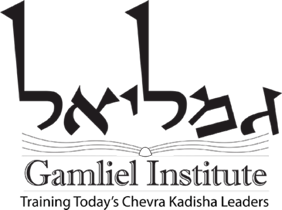Who Should Mourn | Jewish Mourning Calendar | Kaddish and Other Practices | Mourning and Grief
Who Is a Mourner?
By Jewish tradition, a mourner is someone who is the son, daughter, sister, brother, mother, father, or spouse of the deceased. (Others, such as a son-in-law or daughter-in-law, are often included in the category of mourner.) Any person in one of these seven relationships is obliged to do certain acts and refrain from certain acts. The traditional mourning obligations for one’s parent are more extensive than those for other relatives.
From the moment of death until the burial, each of these immediate relatives is considered an onen. The onen has no religious obligations except to attend to the practical necessities of arranging for the funeral. (For instance, the onen is exempt from reciting Sh’ma.) Once burial has occurred, relatives in the seven categories are considered aveilim (mourners). Their traditional obligations are discussed under The Jewish Mourning Calendar.
What about other mourners? What about non-Jews?
Anyone who feels the loss from the death of an individual is free to observe mourning in his/her own way. This includes a Jew mourning for a non-Jew as well as a non-Jew mourning for a Jew. [For more information on how friends and other family members can (and should) provide support to the immediate relatives of the deceased, see Responsibilities of Friends and Other Relatives.]
Jewish tradition defines several stages in the process of mourning, which correspond quite well to modern understanding of the emotional process.
Aninut
The period from the moment of death until the burial is called aninut, and a person in this stage is called an onen. The onen has no religious obligations except to attend to the practical necessities of arranging for the funeral. The Jewish understanding is that an onen cannot focus on anything other than the immediate issue of the burial, and should not be expected to be capable of any ritual observances, even those that might otherwise be performed on a daily basis (such as reciting Sh’ma).
Returning from the cemetery
Immediately on returning from the cemetery, mourners should be greeted with a “meal of consolation” prepared by their extended family and/ or community. It is traditional to place a pitcher of water, a bowl and towels outside the door of the house for the ritual hand washing.
Shiva
Jewish tradition offers very specific recommendations for gradual reentry into normal life. The first week after the funeral is known as shiva (literally, “seven”). During this period, the mourners are treated with the utmost care and respect. Their needs are met by the community, both their physical needs, such as meals, babysitting, etc., and their spiritual and emotional needs. Shiva () is a period of up to a week during which the mourners remain at home. During this time, mourners mostly remain at home and a service is held daily (often in the evening) at the home, so that the mourners may recite the Kaddish [see Kaddish]. Mourners are encouraged to join the congregation on Shabbat to say Kaddish. In some communities services are held in the home both morning and evening. The tradition is that the Mourner’s Kaddish is said in the presence of a minyan, to insure that mourners do not grieve in isolation but rather surrounded by members of their community.
Friends, relatives, and community members visit and bring some food for the household. It is traditional to include round foods (hard-boiled eggs, lentils, bagels, etc.) that are symbolic of the wholeness of life. In some instances where there may be very few or no family members, the role of the community becomes central. People are needed to attend minyanim, bring meals, help with dishes and other housework, help with childcare and/or pet care. Usually the synagogue or the funeral coordinator assist in this process. The shiva period gives the mourners a time to withdraw from the business of the world and begin to integrate and accept their loss. At the close of shiva, the tradition has friends or family accompany the mourner for a brief walk (e.g., around the block) to symbolize the start of reentry into the world.
Our tradition emphasizes focusing on memory and things of emotional significance, and relieves the mourner from focusing on the external world. For this reason there are traditions that the mourner cover mirrors and need not bathe, shave, change clothes, or use makeup. The aim of these practices is to de-emphasize externals, and to keep the focus on the spiritual and emotional aspects of loss.
Shloshim
The next stage of the mourning process is known as shloshim (literally, thirty). This 30-day period is counted from the day of the funeral (and so includes the period of shiva). Following shiva, the mourner returns to work during shloshim but is still not completely back in the world. This ongoing mourning is expressed by avoiding parties, concerts, and other forms of public entertainment. The kri’ah ribbon continues to be worn during this time.
At the conclusion of shloshim, the formal mourning period ends, except for those who are mourning parents. For these mourners, formal mourning, including the recitation of the Mourner’s Kaddish, lasts eleven months (see Shnat ha-evel below). Some people may wish to mark the end of shloshim with a special minyan at which the mourner or family members speak about the deceased. Also, if there is to be a public memorial service, it is usually held at the conclusion of shloshim. The memorial service may include several speakers and music or poetry that might not have been included in the funeral service.
Shnat ha-evel (the first year of mourning)
Traditionally, mourners who have lost a parent say Kaddish daily for eleven months (or a full year), whereas mourning for all other relatives ends with the shloshim. In modern practice, mourners may recite Kaddish for eleven months for other immediate relatives as well. This is a time we are encouraged to get back into life fully, while honoring our dead on a daily basis through the saying of Kaddish.
Unveiling
There is a traditional obligation to create some form of matzevah (“monument”) to mark the site of the grave. The “unveiling” is a formal ceremony following the placement of the matzevah.
Customs differ, but the unveiling is generally held after shloshim and usually in the month before the first yahrzeit (anniversary of the death; see below). The unveiling service is a relatively recent practice originating in the United States. Technically, a rabbi need not be present, but it is helpful to have an experienced person officiate.
The ceremony is very brief, usually of some psalms and readings, a few words about the deceased, the removal of a covering from the monument, the El Malei Rachamim, and, if a minyan is present, the Mourner’s Kaddish. You may ask the rabbi to assist you in putting together an appropriate service to mark the occasion. The unveiling reminds us that we will continue to visit the grave on yahrzeit and during the High Holiday season, and that the memory of the person will always be with us as our life continues.
Yahrzeit
Yahrzeit means “time of year” and is the yearly anniversary of a loved one’s death (traditionally observed on the Hebrew calendar). We observe yahrzeit at home by lighting a yahrzeit candle (which burns for 24 hours) in memory of the deceased. In the synagogue, we observe yahrzeit by saying the Mourner’s Kaddish at services.
Mourner’s Kaddish
The Mourner’s Kaddish (in Hebrew, Kaddish Yatom-literally, “Orphan’s Kaddish“) does not deal directly with death but speaks of the power and majesty of God. Perhaps the ancient rabbis understood that it is in the face of death that one is most likely to deny the existence of God.
We recite the Kaddish to reaffirm our belief. We express our feelings of loss and the hope that God will fill the vacuum that has been created in the world and in our hearts. Some people believe the Kaddish is also said for the benefit of the soul of the deceased to help facilitate its journey. After the funeral it is customary to say Kaddish at every service you attend during mourning. Traditionally, Kaddish is only said for immediate family, but you may say Kaddish for whomever you wish. Some people undertake the mitzvah of saying Kaddish for a person who left no family.
Tzedakah
There is a close connection between tzedakah (the obligation of giving to the poor) and the various mourning customs. You may give tzedakah at any point in the year of mourning as a tribute to the memory of the deceased. It is also customary at a yahrzeit to honor the memory of the deceased by giving tzedakah.
Below are some guidelines for the mourner’s process that take into account human needs for self-acceptance, emotional expression, support from others, and time.
1. Accept your emotions. Realize that grieving can be an emotional roller coaster, involving shock, guilt, denial, panic, anger, and physical symptoms.
2. Express your feelings. A feeling that is denied remains with you and can erupt at inappropriate times. Acknowledging pain is much better for long-term emotional health. Crying is a natural expression of grief for all people – men, women and children.
3. Heal your grief in your own way and in your own time. Ask that others give you this freedom as well.
4. Seek guidance from a counselor, rabbi, or chaplain. They can guide you through the healing process in a holistic way.

